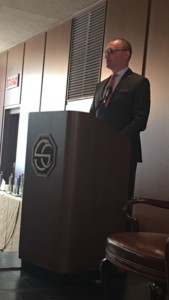 By Dennis Culloton, CEO and President, Culloton Strategies and University of Illinois Visiting Lecturer
By Dennis Culloton, CEO and President, Culloton Strategies and University of Illinois Visiting Lecturer
As I recently wrapped up another mini-semester teaching Crisis Communications at the University of Illinois, it struck me that this year more than ever, students had the unprecedented experience of learning by watching a startling array of major crises befalling brands and politicians. It’s as if the globe decided to offer them a laboratory of real life messy missteps and catastrophic events from which to learn.
We’ve seen major brands like United Airlines suffer self inflicted, debilitating wounds. But no one has given our class more to talk about than President Trump’s administration. Hey kids, don’t leave for summer break yet, the President Trump just fired the FBI director!
I was asked by Chicago Sun-Times reporter Mitch Dudek what I thought of White House Press Secretary Sean Spicer hiding behind some hedges to avoid reporters the evening Director James Comey was unceremoniously dismissed. I offered the only response a self-respecting crisis communications practitioner could provide: it was totally inexplicable.
Presidents, Governors, Mayors, business executives make controversial decisions. In some respects, this is what we pay them to do. What this White House grapples with is the necessity and responsibility of explaining those decisions as part of the mandate to lead. What Lynne Holley and I teach at U of I is that while time is of the essence in crisis communications. It is important to get the key decision makers and executives together to understand the decision and to discuss the top controversial questions. Ideally this meeting takes place before the decision is made. Even if the communications team is playing catch up, it is best to take a few minutes to marshal a thoughtful response instead of springing the decision on your media team as the Washington Post reported happened in this case, leaving your overwhelmed press secretary to resort to hiding in the shrubs.